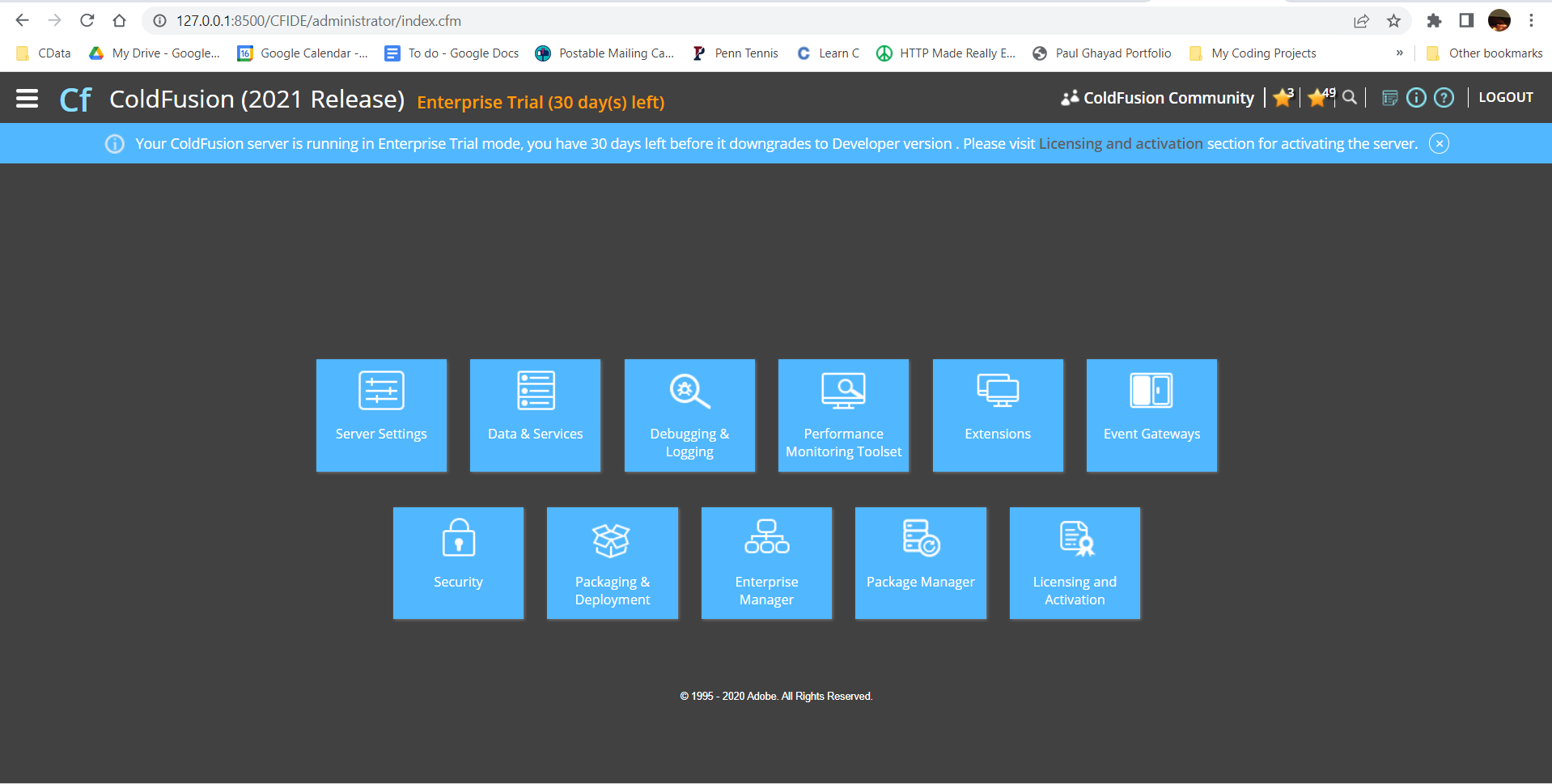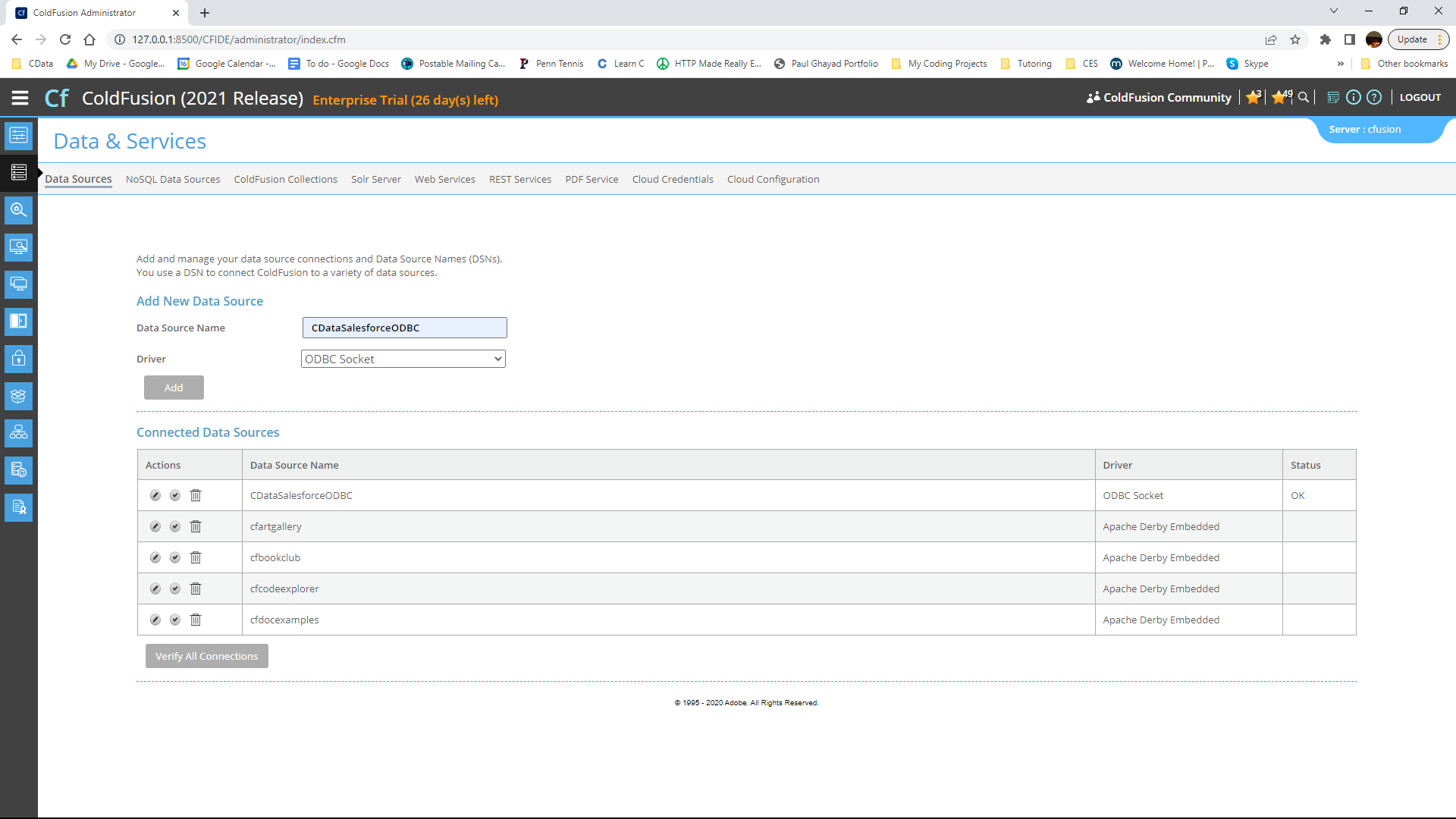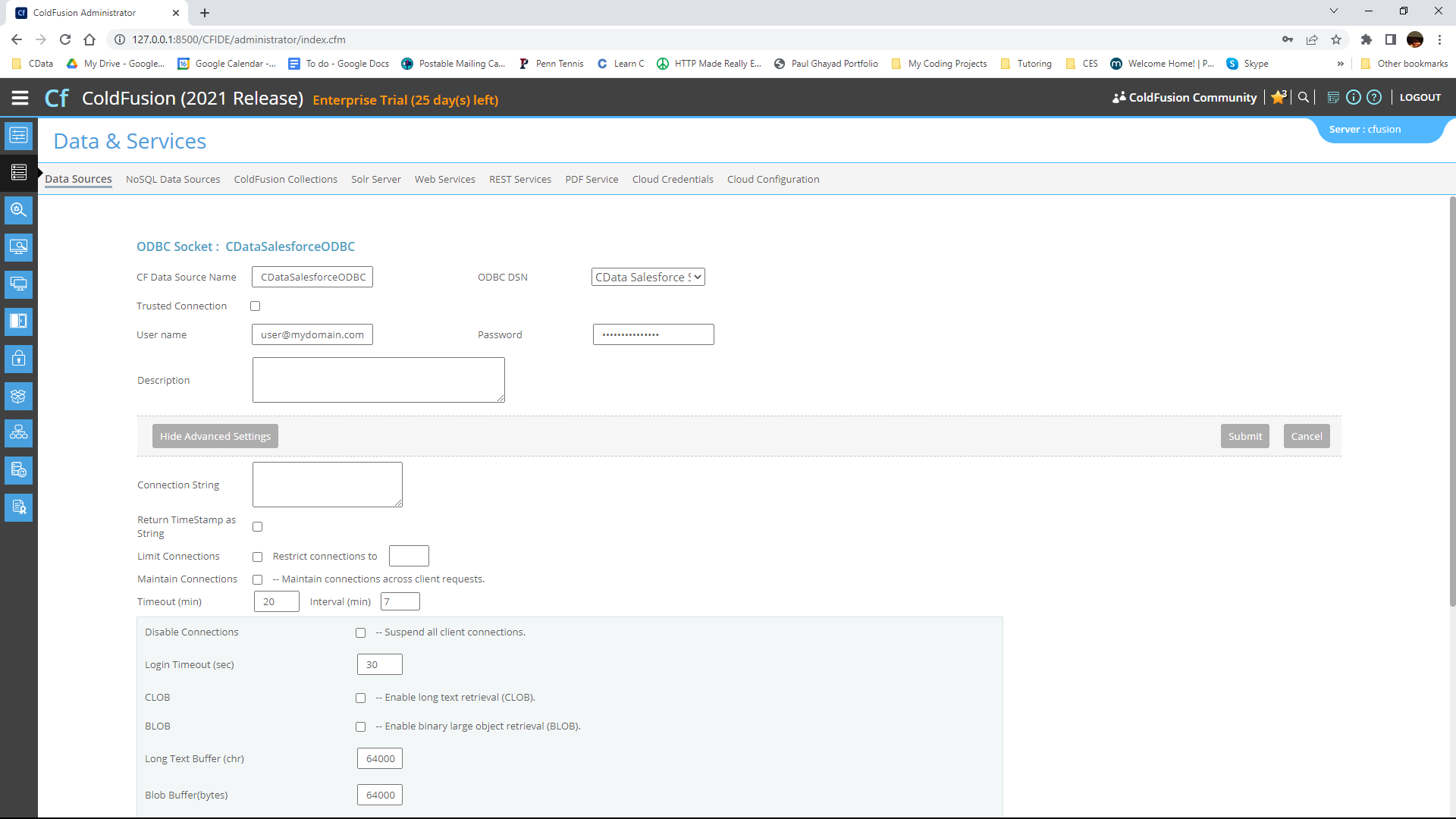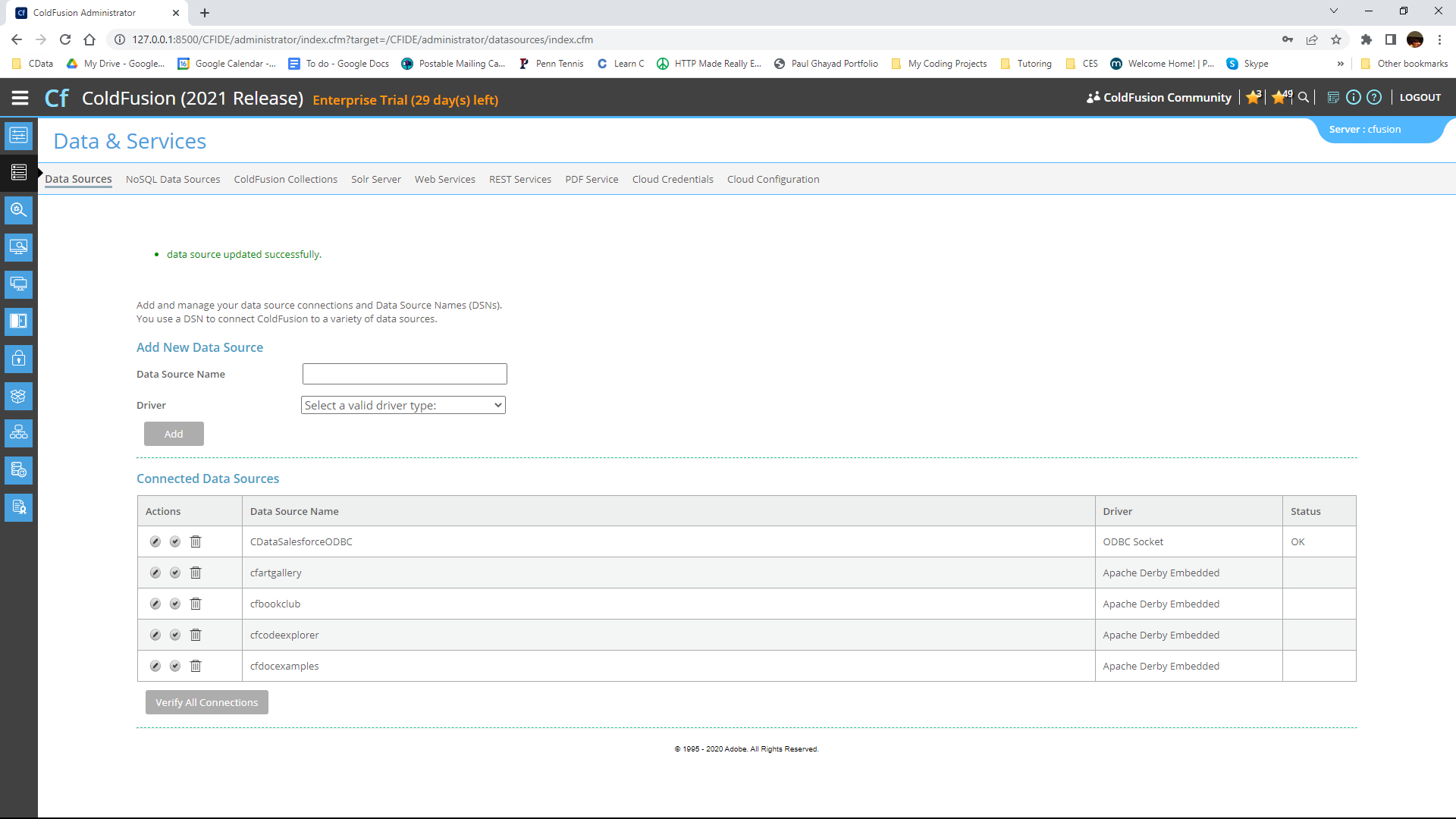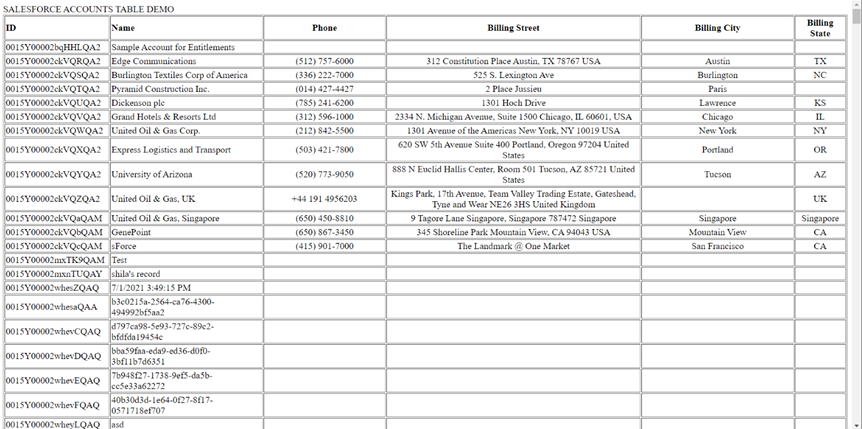Discover how a bimodal integration strategy can address the major data management challenges facing your organization today.
Get the Report →Import Real-Time HCL Domino Data in ColdFusion to Build Applications
Use CData ODBC drivers to import and use HCL Domino data in ColdFusion.
Adobe ColdFusion is a web and mobile application development platform. It uses its own scripting language, ColdFusion Markup Language (CFML), to create data-driven websites as well as generate remote services, such as REST. When ColdFusion is paired with the CData ODBC Driver for HCL Domino, you can link your ColdFusion web and mobile applications to operational HCL Domino data. This allows for your applications to be more robust and complete. This article details how to use the ODBC driver to create a table populated with HCL Domino data from within a ColdFusion markup file.
To follow along with this tutorial, you need to install the CData ODBC Driver for HCL Domino and Adobe ColdFusion.
Configuring the Connection
If you have not already, first specify connection properties in an ODBC DSN (Data Source Name). This is the last step of the driver installation process. You can use the Microsoft ODBC Data Source Administrator to create and configure ODBC DSNs.
Connecting to Domino
To connect to Domino data, set the following properties:
- URL: The host name or IP of the server hosting the Domino database. Include the port of the server hosting the Domino database. For example: http://sampleserver:1234/
- DatabaseScope: The name of a scope in the Domino Web UI. The driver exposes forms and views for the schema governed by the specified scope. In the Domino Admin UI, select the Scopes menu in the sidebar. Set this property to the name of an existing scope.
Authenticating with Domino
Domino supports authenticating via login credentials or an Azure Active Directory OAuth application:
Login Credentials
To authenticate with login credentials, set the following properties:
- AuthScheme: Set this to "OAuthPassword"
- User: The username of the authenticating Domino user
- Password: The password associated with the authenticating Domino user
The driver uses the login credentials to automatically perform an OAuth token exchange.
AzureAD
This authentication method uses Azure Active Directory as an IdP to obtain a JWT token. You need to create a custom OAuth application in Azure Active Directory and configure it as an IdP. To do so, follow the instructions in the Help documentation. Then set the following properties:
- AuthScheme: Set this to "AzureAD"
- InitiateOAuth: Set this to GETANDREFRESH. You can use InitiateOAuth to avoid repeating the OAuth exchange and manually setting the OAuthAccessToken.
- OAuthClientId: The Client ID obtained when setting up the custom OAuth application.
- OAuthClientSecret: The Client secret obtained when setting up the custom OAuth application.
- CallbackURL: The redirect URI defined when you registered your app. For example: https://localhost:33333
- AzureTenant: The Microsoft Online tenant being used to access data. Supply either a value in the form companyname.microsoft.com or the tenant ID.
The tenant ID is the same as the directory ID shown in the Azure Portal's Azure Active Directory > Properties page.
Adding a Data Source and Creating a Table
After creating a DSN, follow the steps below to add a new data source, test our connection to it, create a ColdFusion markup file, and, finally, import HCL Domino HCL Domino data and display it in a table in ColdFusion:
-
From the ColdFusion administrator interface, choose Data & Services.
![Selecting Data & Services]()
-
Here, click "Add New Data Source". The data source name can be any name, provided it conforms to the ColdFusion
variable naming conventions. For our ODBC driver, choose "ODBC Socket", then click the "Add" button.
![Adding Data Source Name]()
-
From the ODBC DSN Dropdown menu select CData HCL Domino Sys. Under the Advanced Settings section, leave the
Connection String blank. Note that any properties specified in this input field will override the ones specified in the
DSN Configuration.
![Populating driver properties]()
-
Now, test the connection by pressing the check mark to the left of the CDataHCL DominoODBC data source you just created.
When the data source reports an "OK" status, it is ready for use.
![Testing the connection]()
-
Next, create a new ColdFusion Markup file (.cfm) and place it in the wwwroot directory ("C:\ColdFusion2021\cfusion\wwwroot")
for ColdFusion.
The following code queries the data source:
<cfquery name="HCL DominoQuery" dataSource="CDataHCL DominoODBC"> SELECT * FROM ByName </cfquery>And a CFTable can be used to quickly output the table in HTML:<cftable query = "HCL DominoQuery" border = "1" colHeaders colSpacing = "2" headerLines = "2" HTMLTable maxRows = "500" startRow = "1"> <cfcol header="<b>Name</b>" align="Left" width=2 text="Name"/> <cfcol header="<b>Address</b>" align="Left" width=15 text="Address"/> ... </cftable>Full code, including the HTML portion is available below:<html> <head><title>CData Software | HCL Domino ByName Table Demo </title></head> <body> <cfoutput>#ucase("HCL Domino ByName Table Demo")#</cfoutput> <cfquery name="HCL DominoQuery" dataSource="CDataHCL DominoODBC"> SELECT * FROM ByName </cfquery> <cftable query = "HCL DominoQuery" border = "1" colHeaders colSpacing = "2" headerLines = "2" HTMLTable maxRows = "500" startRow = "1"> <cfcol header="<b>Name</b>" align="Left" width=2 text="Name"/> <cfcol header="<b>Address</b>" align="Left" width=15 text="Address"/> ... </cftable> </body> </html> -
Finally, run the code in a browser. It produces a table populated with HCL Domino data!
![Running the code]()
As a note, the CData ODBC Drivers also support parameterized queries using the cfqueryparam element.
For example:
SELECT * FROM Account WHERE name =
Get Started Today
Download a free, 30-day trial of the CData ODBC Driver for HCL Domino and start building HCL Domino-connected applications with Adobe ColdFusion. Reach out to our Support Team if you have any questions.





